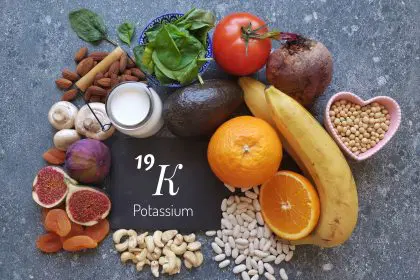The relationship between anxiety and high blood pressure represents one of the most common yet frequently overlooked health connections affecting millions of Americans. With nearly half of U.S. adults experiencing hypertension and approximately 40% of those individuals also struggling with anxiety—a rate significantly higher than the general population—understanding this intersection has become increasingly important for comprehensive health management.
The 6 pathways connecting anxiety and blood pressure
Research has identified several mechanisms through which anxiety may influence blood pressure levels:
- Fight-or-flight activation triggers temporary pressure spikes when anxiety hits, releasing adrenaline that increases heart rate and constricts blood vessels
- Stress-related coping habits like smoking, poor dietary choices, and alcohol consumption often develop alongside anxiety and independently raise blood pressure
- Chronic inflammation appears in both conditions, potentially creating a physiological link that connects mental distress with cardiovascular strain
- Sleep disruption from persistent worry interferes with the body’s natural blood pressure regulation during rest periods
- Gut microbiome alterations associated with anxiety may influence blood pressure through the gut-brain connection
- Medication interactions sometimes occur when treating one condition affects the other, particularly with certain anti-anxiety medications
While medical experts haven’t definitively established that anxiety directly causes chronic hypertension, mounting evidence suggests the relationship deserves serious attention.
The immediate impact of anxiety on your cardiovascular system
The body’s response to anxiety occurs almost instantaneously. When faced with a stressful situation or persistent worry, the sympathetic nervous system—our built-in alarm system—activates within seconds. This triggers the release of stress hormones like adrenaline and cortisol, which prepare the body for perceived danger.
These hormones prompt the heart to beat faster and with greater force while simultaneously narrowing blood vessels to redirect blood flow to essential organs. This combination naturally raises blood pressure readings, sometimes dramatically. For most people, these elevations resolve once the anxiety subsides, typically within minutes to hours.
However, for individuals experiencing chronic anxiety, these pressure spikes may occur frequently throughout the day, placing additional strain on the cardiovascular system. Over time, this pattern may contribute to vascular changes that make it more difficult for blood pressure to return to normal levels.
Long-term consequences of chronic anxiety
The potential long-term implications of persistent anxiety on blood pressure present concerning trends. One particularly notable study followed participants for multiple years and discovered individuals with anxiety disorders faced a 55% greater likelihood of developing hypertension over time compared to their non-anxious counterparts.
This elevated risk appears independent of other known hypertension risk factors, suggesting anxiety itself may play a causal role. Moreover, when patients receive effective treatment for chronic anxiety, many experience meaningful reductions in blood pressure measurements, further strengthening the case for a direct relationship.
Physiological changes from prolonged anxiety may include vascular inflammation, increased arterial stiffness, and alterations in hormonal regulation systems—all factors that contribute to sustained hypertension. These changes don’t occur overnight but develop gradually, making early intervention crucial.
Distinguishing between symptoms of each condition
One complicating factor in addressing the anxiety-hypertension connection involves the overlap in symptoms. Anxiety typically manifests through excessive worry, restlessness, fatigue, poor concentration, and sleep disturbances. During acute episodes like panic attacks, physical symptoms often include racing heart, chest tightness, nausea, and an overwhelming sense of doom.
By contrast, hypertension earned its reputation as the “silent killer” because it typically produces no noticeable symptoms in its early and moderate stages. This absence of warning signs explains why many people remain unaware of their elevated blood pressure until discovered during routine medical screenings.
However, in severe cases or during hypertensive crises when blood pressure reaches dangerously high levels, symptoms may emerge that resemble anxiety: throbbing headaches, vision disturbances, shortness of breath, and heart palpitations. This overlap sometimes leads individuals to attribute hypertension symptoms to anxiety or vice versa, potentially delaying proper treatment.
Managing the dual health challenges
The good news amid these concerns centers on the fact that both anxiety and hypertension respond well to treatment. Even better, many management strategies benefit both conditions simultaneously, creating opportunities for comprehensive improvement through targeted lifestyle changes.
Regular physical activity stands out as perhaps the most powerful intervention. Even moderate exercise like brisk walking for 30 minutes most days provides remarkable benefits for cardiovascular health while triggering the release of endorphins and other mood-regulating neurotransmitters that ease anxiety.
Dietary approaches that support heart health, such as the Mediterranean or DASH eating patterns, typically emphasize whole foods rich in potassium, magnesium, and fiber—nutrients associated with both blood pressure regulation and improved mood stability. Reducing processed foods, excessive sodium, and refined sugars benefits both conditions.
Mindfulness practices and stress management techniques directly address anxiety while indirectly supporting healthy blood pressure. Regular meditation, deep breathing exercises, progressive muscle relaxation, and similar practices activate the parasympathetic nervous system, which counteracts the fight-or-flight response that elevates blood pressure during anxious states.
Sleep quality improvement represents another powerful intervention point. Both anxiety and hypertension worsen with inadequate sleep, creating a potential negative cycle. Prioritizing 7-9 hours of quality sleep through consistent bedtime routines, limiting screen time before bed, and creating comfortable sleep environments supports recovery for both mind and body.
When to seek professional help
While lifestyle modifications form the foundation of managing both conditions, recognizing when to seek professional intervention remains crucial. For anxiety, consider consulting a healthcare provider when:
Worry or fear interferes with daily activities or relationships Physical symptoms like racing heart or shortness of breath occur frequently Sleep disturbances persist despite attempts at improvement Anxiety seems to worsen rather than improve over time
For blood pressure concerns, medical attention becomes appropriate when:
Home readings consistently exceed 130/80 mmHg Significant fluctuations occur between readings Lifestyle changes fail to lower elevated numbers Family history includes cardiovascular disease
Emergency medical care becomes necessary if experiencing:
Blood pressure readings above 180/120 mmHg Chest pain or pressure sensations Sudden weakness, numbness, or vision changes Severe, abrupt headache unlike previous headaches Difficulty breathing or speaking
These symptoms could indicate a hypertensive crisis or other serious condition requiring immediate treatment.
The integrated approach to wellness
The interconnected nature of anxiety and hypertension highlights the importance of addressing health holistically rather than treating conditions in isolation. When healthcare providers recognize and address both the psychological and physiological aspects of these conditions, patients typically experience better outcomes.
This integrated approach might include collaborations between primary care physicians, cardiologists, and mental health professionals. Such teams can coordinate medication strategies to maximize benefits while minimizing side effects, ensuring that treatments for one condition don’t inadvertently worsen the other.
For individuals managing these dual health challenges, self-monitoring becomes invaluable. Tracking both anxiety symptoms and blood pressure readings helps identify patterns and triggers, empowering more informed decisions about lifestyle adjustments and treatment options.
By acknowledging the bidirectional relationship between mental and cardiovascular health, patients and providers can develop more effective strategies to enhance overall wellbeing. This comprehensive approach not only improves quality of life but potentially reduces the risk of serious complications from either condition, offering a path toward sustainable health improvements.













